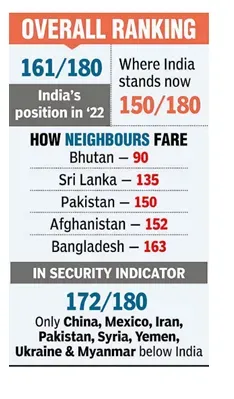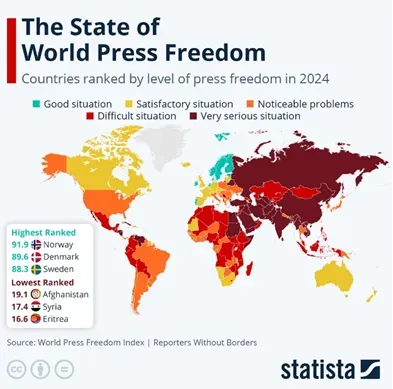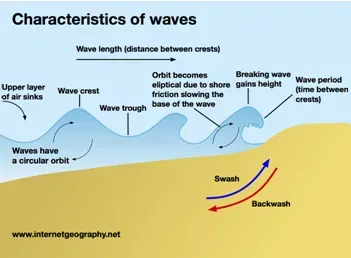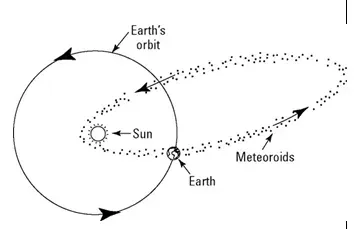

4th May 2024 (13 Topics)
Context
The Union health ministry has instructed states and union territories (UTs) to identify and track cases of brain stem death (BSD) in intensive care units (ICUs) in order to expedite cadaver organ donations.
1: Dimension- Challenge for low organ donation rate
- Despite the large number of possible BSD cases, the government feels that a major obstacle to India's poor organ donation rate is the insufficient identification and certification of these cases.
- Additional problems include
- a lack of knowledge regarding organ donation
- false beliefs about the procedure
- infrastructure problems
- National Organ and Tissue Transplant Organization (NOTTO) has only 250 hospitals registered with it.
2: Dimension- Laws governing organs donation
- The Transplantation of Human Organs and Tissues Act (THOTA), 1994 (amended in 2011), governs organ donation in India.
- The Act introduced the idea of brain death to India and made the sale of organs for profit a criminal offense.
- The latter made deceased organ donation possible by enabling the retrieval of organs from brain-stem dead individuals.
- In addition to regional (ROTTO) and state transplant organizations, the government established the National Organ and Tissue Transplant Organization (NOTTO) as the premier center for organ procurement and distribution under the Act (SOTTO).
- The latter uses an organ-sharing network to distribute organs among recipients according to each state.
|
Fact Box: About National Organ and Tissue Transplant Organization (NOTTO)
|


Context
Due to a potentially deadly swell of waves hitting the coastal regions, scientists have recommended a complete stoppage of all recreational activities along the coast and beaches of numerous states on India's eastern and western coasts.
What is a Swell wave?
- The development of long wavelength waves on the ocean's surface is known as a swell. These are made up of several waves of surface gravity.
- Formation:These waves are caused by far-off storms like hurricanes or even extended periods of intense gale winds.
- In India, early warning systems like the Swell Surge Forecast System, which was introduced by the Indian National Centre for Ocean Information Services (INCOIS) in 2020, provide information about the formation of extremely high waves.

|
Fact Box: About Waves
|


Context
South Africa commemorated 30 years since the end of apartheid (on April 27, 1994) and the beginning of its democracy. When Nelson Mandela took office as the nation's first Black president a few days later, apartheid came to an official end.
About
- Background:From the 1600s when Dutch settlers arrived, through the 1700s and 1800s when British colonists arrived, South Africa was a project that subjected Black people to laws and practices that were systematically segregationist.
- Law enactment: However, these discriminatory practices were made official and enshrined into law with the 1948 establishment of apartheid.
- It rigorously divided people into distinct classes according on the color of their skin.
- It creates four strata into which the policies firmly and violently divided the country's different racial groups.
- White
- Colored (multiracial)
- Indian
- Black people
- Before 1994, black and other people of colour were denied most basic freedoms, not just the right to vote.
- Finally, the 1994 election changed South Africa and Apartheid ended.



Context
The 2024 World Press Freedom Index, released by Reporters Without Borders (RSF), has placed India at 159, two ranks higher than the previous year. This news has sparked discussions about the state of press freedom in the country, particularly in the context of recent developments and government policies.
Key-findings
- Report Title:“Asia-Pacific: press freedom under yoke of authoritarian governments”
- India's Ranking: India's ranking in the Index has improved slightly, but RSF highlights concerns about the deteriorating press freedom situation in the country.
- Factor responsible for poor ranking: Violence against journalists, highly concentrated media ownership, and political alignment.
- Media Ownership and Political Alignment: RSF raises concerns about the influence of prominent business figures, like MukeshAmbani and Gautam Adani, who have substantial media interests and close ties to the government.
- Emergence of "Godi Media": The report points out the rise of "Godi media," referring to media outlets that mix populism and pro-government propaganda.
- Regional Comparisons: India's press freedom ranking is juxtaposed with those of its neighbors, with some ranking slightly better (e.g., Sri Lanka, Nepal) and others worse (e.g., Pakistan, Bangladesh, Myanmar).

- Other findings:
- Toppers:Norway and Denmark
- Bottom countries: Eritrea and Syria
- India’s take on the index: India does not agree to the RSF’s conclusions for various reasons such as very low sample size, little or no weightage to fundamentals of democracy, adoption of a questionable and non-transparent methodology.

|
Fact Box: World Press Freedom Index
Reporters Without Borders
|


Context
The Eta Aquariid meteor shower, originating from the famous Halley's Comet, is set to peak soon.
Formation of Eta Aquariid Meteor Shower
- The Eta Aquariid meteor shower is formed when the Earth passes through the orbital plane of Halley's Comet, a periodic comet that orbits the Sun every 76 years.
- This celestial event occurs annually.
- First observed in 240 BCE, the recurring appearances of this comet were elucidated by astronomer Edmond Halley in
- Characteristics: Comprising burning space debris moving at speeds of around 66 km per second, the Eta Aquariid meteor shower is known for its rapid speed, resulting in long, glowing tails that can last several minutes.
- This spectacle is best visible to countries in the Southern Hemisphere, such as Indonesia and Australia.
- Association with Other Meteor Showers: Similar to the Eta Aquariids, the Orionids meteor shower also originates from Halley's Comet and occurs annually in October.
|
Fact Box: About Meteors
|


Context
China launched a lunar probe Chang’e-6 to land on the far side of the moon and return with samples that could provide insights into differences between the less-explored region and the better-known near side.
Key-highlights:
- The Chang’e-6 lunar probewas carried aboard a Long March 5 rocket.
- If successful, it will make China the first nation to ever retrieve samples from the far-side of the moon.
- The anticipated 53-day mission comes after China became the first country in 2013 to achieve a robotic lunar landing in nearly four decades, and two years after the nation completed its own orbital space station, the Tiangong, in 2022 to rival the International Space Station.
- The goal of China's mission is to either land or orbit the moon. Previous lunar missions have also been launched.
- Other Significant Lunar Missions:
- Around the same time last year, India successfully landed its first spacecraft, the Chandrayaan-3, on the moon.
- When Russia's Luna 25 probe crashed into the lunar surface, its first lunar mission in decades came to an abrupt end.
- Japan joined India, the United States, China, and Russia/Soviet Union as the countries with the most unmanned spacecraft landings on the moon in January.
|
Fact Box: Dark Side of the Moon
|


Context
The term "digital house arrest" was recently popularized by cybercriminals who are always coming up with new schemes to defraud people in the ever expanding digital world.
About
- Cybercriminals use a technique called "Digital House Arrest" to extort victims by keeping them captive at home.
- By using AI-generated voice or video calls to impersonate police or authorities and by suggesting that the victim has done something wrong with their Aadhaar or phone number, the scammers create a climate of dread.
- By making individuals dread being arrested and making them pay a fee, they jail them in their own houses.
|
Fact Box: Government Interventions
|


Context
Numerous violent eruptions of the Ruang volcano have sparked worries about the risks of living on the island in the future.
About
- Ruang Island, a small island in the Sitaro islands chain, is home to the Stratovolcano volcano.
- North Sulawesi province is home to Ruang Island.
- Ruang is one of Indonesia's around 130 active volcanoes.
- Because of its location on the Pacific "Ring of Fire," a network of fault lines that runs from the western coasts of the Americas through Japan and Southeast Asia, the archipelagic nation is vulnerable to earthquakes and volcanic eruptions.
|
Fact Box: About Volcani eruption
|


|
S.No. |
Term |
About |
|
1. |
Comets |
Comets are defined as icy bodies of frozen gases, rocks and dust left over from the formation of the solar system about 4.6 billion years ago. They orbit the sun in highly elliptical orbits |
|
2. |
Shrinkflation |
Shrinkflation is a type of inflation that occurs when a product's size is decreased but its retail price is kept the same. It is most prevalent in the food and beverage industry.
|
|
3. |
Line of Actual Control |
The LAC is the demarcation that separates Indian-controlled territory from Chinese-controlled territory. India considers the LAC to be 3,488 km long, while the Chinese consider it to be only around 2,000 km |
|
4. |
Line of Control |
LOC is a 740 km long boundary or line of military control that divides the border between India and Pakistan in the region of Jammu and Kashmir |


Context
India is witnessing the simultaneous global rise and regional decline of its power.
India's Global Rise vs. Regional Decline:
- Global Rise: India's growing absolute power, peer accommodation, and active participation in global institutions like the G-20 and multilateral groups such as the Quad showcase its increasing geopolitical significance on the global stage.
- Regional Decline: Despite its global rise, India's influence in South Asia is diminishing due to factors like comparative power loss vis-à-vis China, changes in South Asian geopolitics, and the rise of China's influence in the region.
Impact of China's Rise:
- Shift in Regional Balance of Power: China's ascent in South Asia, coupled with the US withdrawal from the region and India's focus on the Indo-Pacific, has tilted the regional balance of power in Beijing's favor, prompting smaller South Asian powers to adopt strategies like balancing, bargaining, and hedging.
- Challenges for India: India must acknowledge the changing regional dynamics, focus on its strengths, and adopt proactive policies to counter China's influence in the region, including engaging in maritime opportunities, revisiting traditional conceptions of the region, and utilizing soft power diplomacy.
Utilizing Soft Power and Adaptability:
- Soft Power Utilization: India should leverage its soft power through informal contacts and conflict management initiatives to retain influence in the region, fostering dialogue and cooperation among political and civil society actors across South Asia.
- Adaptability and External Partnerships: New Delhi's openness to engaging with external partners and viewing the region through a non-India centric lens provides opportunities for addressing regional challenges and maintaining influence despite the dichotomy between global rise and regional decline.
Mains Question:
Discuss the paradox of India's foreign policy, analyzing the simultaneous global rise and regional decline of Indian power.


Context
The United Nations summit on Sustainable Development Goals (SDGs) assessed progress towards achieving the SDGs, revealing slow progress and the need for urgent action.The Agenda-2030, which was adopted by the UN General Assembly in 2015, identified 17 SDGs with 169 specific targets to be achieved by 2030.
Slow Progress and Concerns:
- Insufficient Progress: Progress towards achieving the SDGs from 2015 to 2019 was insufficient, with the COVID-19 pandemic and other global crises further impeding progress.
- Deficiencies in Goal Pursuit: There is little attention towards SDGs related to the environment and biodiversity, and the current practice of pursuing SDGs fails to address the integrated and indivisible nature of the goals, posing a threat to environmental sustainability.
- Environmental degradation: The present trend, if it continues, will lead to accelerated environmental degradation and the purpose of transiting towards sustainability defeated.
Urgent Action and Recommendations:
- Key Areas for Action: The UN SDG Report 2023 identifies five key areas for urgent action, including commitments from governments, integrated policies to eradicate poverty and reduce inequality, strengthening of national institutions, international cooperation, and support for the UN development system.
- Scholarly Analysis and Recommendations: A team of scholars analyzed the political impact of SDGs and concluded that while SDGs have led to discursive effects and some institutional reforms, they have not been transformative in national and local politics. Recommendationsinclude adopting a systemic approach, managing trade-offs, and maximizing co-benefits.
- Election Year Considerations: The year 2024 marks elections in numerous countries globally, presenting an opportunity for newly elected governments to align national policies with sustainability goals and address environmental challenges.
Mains Question:
Discuss the progress and challenges in achieving Sustainable Development Goals (SDGs) as assessed in the United Nations summit. Evaluate the recommendations for urgent action and the role of political actors in aligning national policies with sustainability objectives, especially in the context of the upcoming global elections in 2024.


Context
The Oxford-AstraZeneca vaccine is under scrutiny due to its link to a rare adverse side effect, thrombosis with thrombocytopenia syndrome (TTS), leading to legal actions and ethical dilemmas.
Understanding the Rare Side-Effect:
- Definition of TTS: Thrombosis with thrombocytopenia syndrome (TTS), also known as vaccine-induced prothrombotic immune thrombocytopenia (VIPIT) or vaccine-induced immune thrombotic thrombocytopenia (VITT), is a rare syndrome associated with adenoviral vector Covid-19 vaccines, characterized by blood clots and low platelet count.
- Challenges in Vaccine Trials: The expedited development of Covid-19 vaccines and the adaptive trial design may have contributed to the insufficient detection of rare side effects like TTS, which are not adequately powered in traditional clinical trials.
Threat Perception and Regulatory Response:
- Incidence and Fatality Rates: TTS reporting rates vary globally, with higher rates in some countries and lower rates in others, along with divergent fatality rates. The decision to suspend the AstraZeneca vaccine by various countries highlights concerns over its safety and efficacy.
- Regulatory Assessments: Despite concerns, regulatory bodies have concluded that the benefits of the vaccine outweigh the risks, emphasizing the importance of informed decision-making and risk communication.
- Legal and Ethical Implications: Legal actions, such as the class action lawsuit in the UK seeking compensation, raise ethical dilemmas about vaccine safety, public trust, and government indemnity agreements, underscoring the need for transparent and accountable decision-making.
Mains Question:
Discuss the challenges posed by the rare adverse side effect of thrombosis with thrombocytopenia syndrome (TTS) associated with the Oxford-AstraZeneca vaccine.


Context
In Shaksgam Valley, an area of Pakistan-occupied Kashmir (PoK) that Beijing acquired in 1963, China is constructing a road that would link Muzaffarabad with Yarkahnd in Xinjiang via the Mustagh Pass.
About
- Located 5,400 square kilometers north ofSiachen, the Shaksgam valley is part of Pakistan-occupied Kashmir (PoK) and provides the Chinese with a strategic edge along the Line of Actual Control (LAC).
- The Shaksgam Valley is a part of India's territory because India rejected the 1963 "China Pakistan Boundary Agreement," which purportedly allowed Pakistan to try and illegally hand over the region to China.
- China unlawfully acquired 5180 square kilometers of Indian territory in the Shaksgam Valley from Pakistan in 1963.
- The Trans Karakoram Tract, commonly known as the Shaksgam Valley, is a portion of the PoK'sHunza-Gilgit region.
- The road is thought to be a segment of a route that connects the Upper Shaksgam Valley, which lies adjacent to the Siachen Glacier, to the Karakoram Highway.
- This new road crosses the Aghil Pass, which is 16,333 feet high.
- It may offer an alternate route to the Upper Shaksgam Pass, which leads to the Karakoram Pass, and to the Khunjerab Pass, which is located in the northern areas of occupied Jammu and Kashmir.
- Dominate features of the region are the K2 peak. The region is mostly covered in glaciers and has high mountains on all sides.







